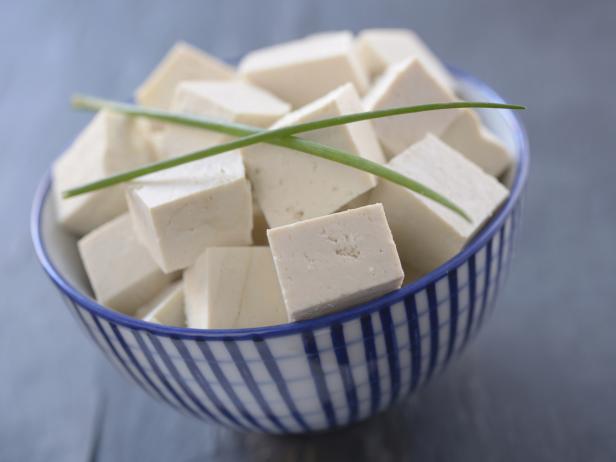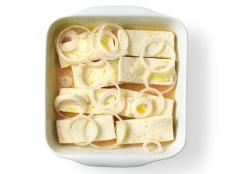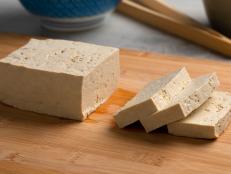What's the Difference Between Tempeh, Tofu and Seitan?
Plus, which one has the most protein?
Whether you're a new vegetarian or just want to eat a few more meatless meals each week, we've got the nutritional breakdown and the basics about three of the most popular meat alternatives: tofu, seitan and tempeh.
Tempeh Vs Tofu

-lvinst-
Tofu Nutrition
Tofu, the most well-known meat alternative, originated in China and is made from soybeans through a process of coagulating soy milk. A 3-ounce portion of firm tofu (about the size of a smartphone) contains 120 calories, 6 grams of fat and 12 grams protein, plus minerals like selenium, zinc, iron, magnesium and potassium. Blocks of tofu are also commonly packed in a calcium-containing solution to preserve freshness, which also boosts content of the bone-building mineral.
The beauty of tofu is that it will take on any flavor it's prepared with. Its various textures include tender "silken" and more sturdy blocks labeled as "firm" and "extra firm." This versatility allows for tofu to be steeped into soup, roasted, fried, baked or pureed into smoothies, puddings and frozen treats. Check out our story How to Cook Tofu for even more info on the different varieties of tofu and how to prepare them.
(If you're curious about the controversies around eating too much soy, get the facts.)

alvarez/Getty Images
Tempeh Nutrition
Tempeh is a traditional soy product originally made in Indonesia, making it unique in comparison to tofu and seitan. This plant-based protein option is made from soybeans that have been fermented and compressed. It has an earthy, nutty flavor and a denser texture. Many brands of packaged tempeh are combined with other grains like barley and rice, plus seasonings and flavorings from flax and sesame seeds.
A 3-ounce portion of tempeh averages 160 calories, 9 grams of fat and 15 grams of protein. It contains plentiful amounts of B-vitamins and minerals like iron, calcium, potassium and magnesium. Tempeh contains the most fiber and more protein than tofu because it contains the whole bean. The soy protein in tempeh is more digestable because of the fermentation process.
Tempeh is often prepared in thin slices and fried, producing a crispy crust with a soft interior. Add tempeh to stir fry or marinate then bake, grill or fry. It can also be crumbled and added to soups and stews to add a pleasant chunky texture. For more information on tempeh and how to prepare it, head over to our story Everything to Know about Tempeh.

Ivannag82/Getty Images
Is Seitan Healthy?
Seitan, also known as "wheat meat," is made by washing wheat flour dough with water until all the starch is dissolved and only wheat gluten is left. Seitan originated in Japan and China, where it is commonly consumed as a vegan meat alternative. Seitan has a chewy and dense texture, but because of its density it doesn't absorb flavors as quickly as tofu. Seitan is sold many different ways, like Tofurky deli slices or marinated ready-to-eat strips. If you are a meat lover looking for an alternative, seitan may be the best choice for you. However, most vegetarians who dislike the texture of meat stay away from seitan. Of the three alternatives we're comparing, it has the most protein but also the most sodium. For more info on how to prepare and enjoy seitan, check out our story, What Is Seitan?.
Related Links:


































